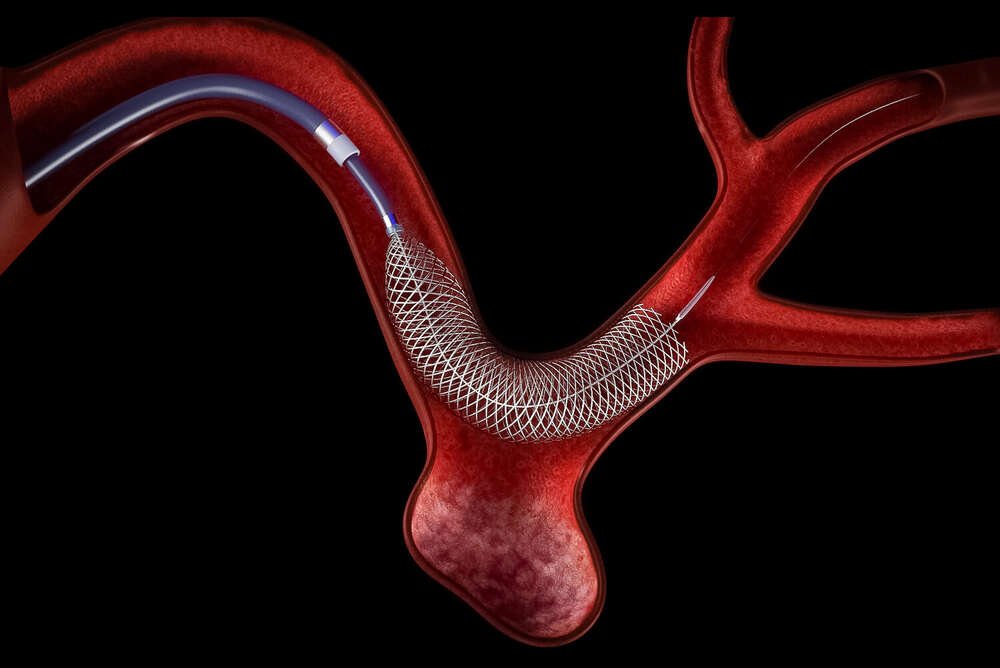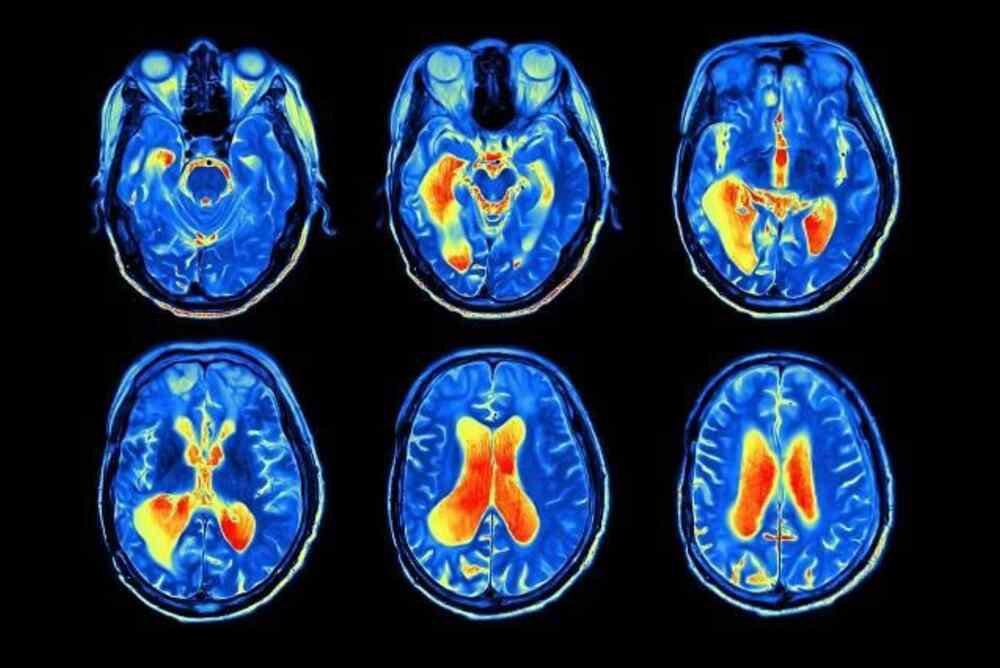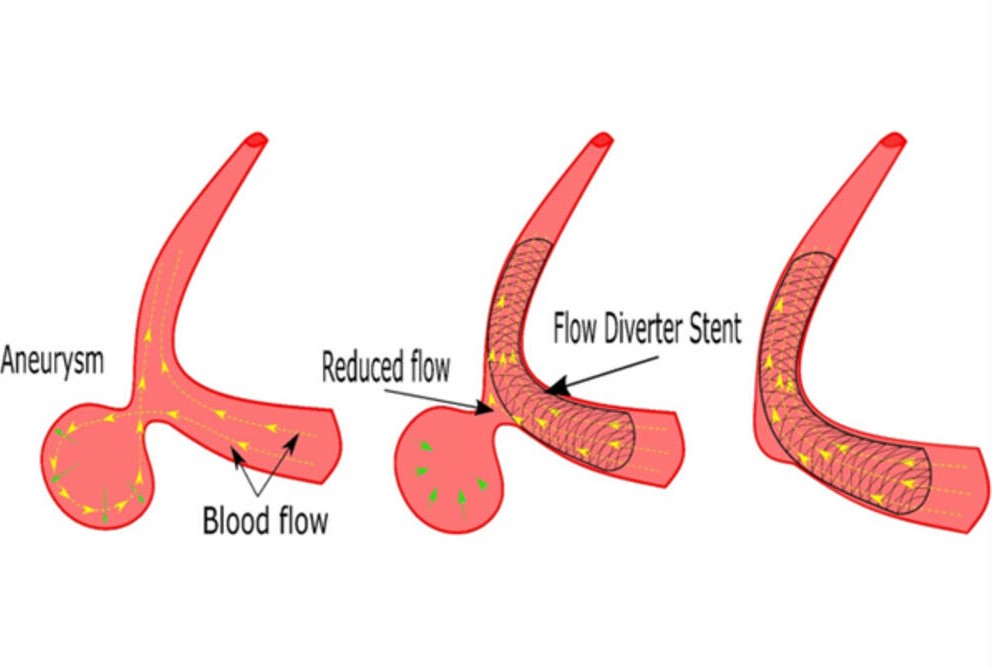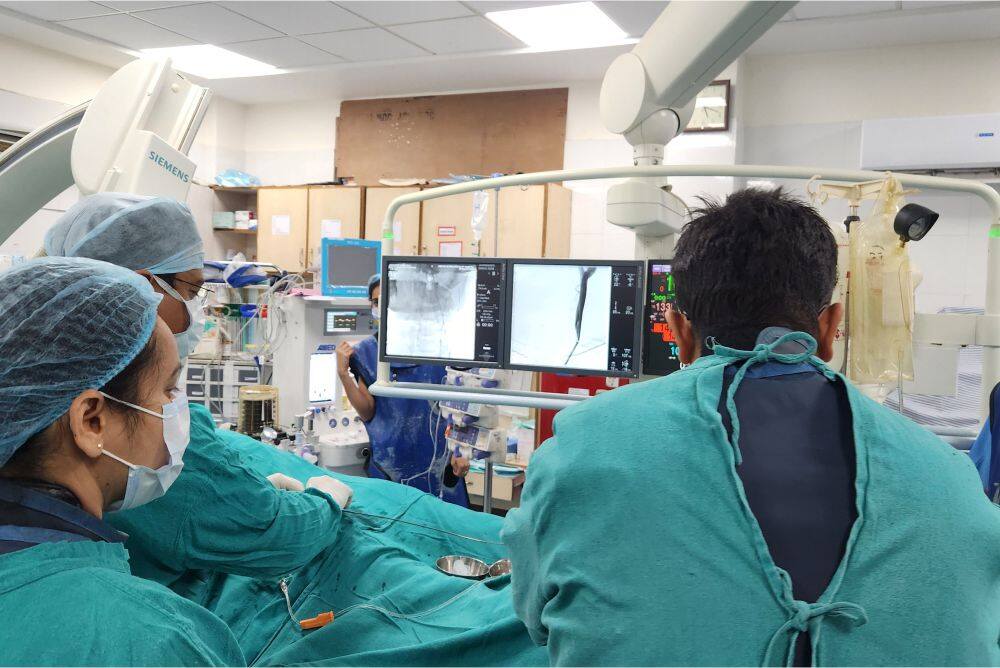Support in Insurance Claim
No-Cost EMI
Without Admission
Short Hospital Stay
4.9 Rating on Google
Benefits

Minimally Invasive

Low Risk of Rupture

Faster Recovery

Preserves Blood Flow
What is a Flow Diverter?
The flow diverter is an ingenious mesh that mimics a stent to be placed within the artery that is adjacent to an aneurysm. Made of a strong fine wire strand—available in a variety of configurations that include 12, 16, 48, or 64 strands—it functions by reconstructing the blood vessel and slowly stopping the blood flow to the aneurysm via clever flow diverting. High-end devices like the Krishna Flow Diverter (KFD) and the PAL Flow Diverter act as scaffolds that not just help treat the aneurysm but also aid in the healing process of the artery. This is particularly important in the treatment of complex, wide-neck aneurysms, which cannot be treated with standard therapies.


Who Needs Flow Diverter Placement?
The placement of a flow diverter is generally advised for patients with difficult brain aneurysms, where traditional techniques like surgical clipping or coiling are either too risky or ineffective. This is the case for:
- Large or Giant Aneurysms
- Aneurysms with Wide Neck (with an extensive base)
- Fusiform Aneurysms (that don't have distinct necks)
- Recurrent Aneurysms, which were treated previously, but are now reappearing.
It is a great option for patients in need of the safety of a less invasive, more secure procedure with a faster recovery time. High-flow diverters are a great option for patients who require fewer procedures. A high-flow diverter could be a good choice for certain situations that require exact control of the diversion of blood flow.
Benefits of Flow Diverter Placement
The option of a flow diverter in IRFacilities written by Dr. Sandeep Sharma, brings numerous significant advantages:
- Minimally Invasive Procedure: This procedure is a way to avoid open surgery by using a small cut into the groin to gain access.
- Long-lasting and durable solution: The device is an ongoing scaffolding, with blood thinners typically needed for a short period of time (typically for a period of one year) to aid in the process of healing.
- Superior Performance In Complex Conditions: This procedure can achieve total and long-lasting occlusion of aneurysms in cases where other treatments may not be effective.
- The preservation of natural vascular structures: In time the blood vessel undergoes positive remodelling and restores its full functionality.
- Faster recovery and shorter hospital Stay: Patients enjoy less recovery time and a quicker return to daily activities when compared with traditional procedures.


Treatment Options for Brain Aneurysms
The effective management of a brain aneurysm requires an approach to treatment that is carefully designed and individualized. The three main interventions are:
- Coiling (Endovascular Coiling): A catheter-based method in which platinum coils are used to fill an aneurysm. It is best suited for smaller, straightforward aneurysms that have a clearly defined neck.
- Surgery Clipping: A procedure that involves a cranial clip. A clip is positioned across the neck of the aneurysm. The procedure, though beneficial, is excruciating and can cause a lengthy recovery.
The Flow Diverter placement technique is the current standard for cases with complex structures. A flow diverter stent can be used to repair the damaged artery. It's not invasive at all and helps the body's natural healing processes, resulting in an effective and long-lasting solution for a variety of aneurysms that are difficult to heal at IRFacilities.
The Flow Diverter Procedure Explained
The flow diverter technique at IR Facilities under the guidance of Dr. Sandeep Sharma exemplifies accuracy, safety and the highest level of clinical excellence.
- The Guided Access method: A slim catheter is introduced gently through a tiny puncture within the groin region.
- Accurate Navigation: Using real-time imaging with fluoroscopic images, the catheter is carefully directed through the vascular system until it reaches the exact site of the brain aneurysm.
- Device deployment: The compact flow diverter stent, such as a KFD or FD, is carried through the microcatheter and then placed across the aneurysm neck, expanding to fit the artery's contours perfectly.
- Instant Therapeutic Effect: The blood flow is immediately diverted towards the aneurysm, leading to thrombosis and healing. The process is significantly enhanced when combined with adjunctive coiling techniques.
Patients can benefit from an in-hospital stay of just a few hours and the peace of mind that comes from our modern technology and expertise.


Flow Diverter Cost in India
The cost of flow diverters in India offers access to world-class medical services at a significantly lower cost than in most Western nations. The total price is contingent on a variety of factors, with the selection of the device playing an important function based on the aneurysm's particular features.
- Krishna Flow Diverter (KFD) is a top-quality device that is renowned for its outstanding performance and long-term effects—estimated cost: Rs 3,50,000 to 4,00,000.
- PAL The Flow Diverter (PAL FD) is A highly sophisticated and efficient flow diverter alternative—estimated cost: Rs 800,000 to 120,000 rupees.
Additional factors influencing the overall cost include the hospital facility fees, the complexity of the individual case, and the unparalleled expertise of our neuro-interventionist, Dr. Sandeep Sharma. While investing in a flow diverter is a substantial cost at first, it offers outstanding value over the long term by providing an effective and long-lasting solution for complex aneurysms. This lowers the risk of a future retreatment, and also ensures long-term vascular health.











